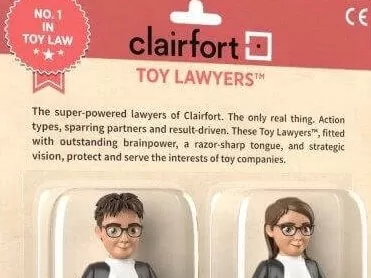In the blog series ‘the IP protection of …’, we explain how intellectual property law can provide protection for a specific product or service. We start with Barbie. From candy-coloured clothes on the pink carpet and in the streets, pictures in doll boxes in cinemas to ‘#Kenough’ on social media, the hype surrounding the new Barbie movie was unmissable. Although the Barbie doll has been around for decades, she is back in full swing. In this blog, we discuss the ways in which Barbie enjoys protection under intellectual property law.
Barbie as a trademark
Both the word ‘Barbie’ and the Barbie logo are protected by trademark law. Related names such as ‘Ken’ and ‘Kenough’, as introduced in the film, have also been registered as trademarks by Mattel, the company behind Barbie. Initially, the trademark ‘Barbie’ was registered only for dolls, but over the years, the number of products for which the trademark provides protection has expanded to products such as clothes and jewellery, among others. To use the trademarks, a licence will have to be obtained from Mattel in most cases.
Patent protection of Barbie
Patents have also been granted for Barbie dolls in the past. The first patent was granted in 1961 in America for the construction of the Barbie doll. Not much later, patents were also granted in connection with the possibility of lifelike movement of the Barbie doll’s limbs. Since patent law offers protection for only 25 years, these patents have since expired.
Barbie registered as a design
The design of a product can be protected by design rights. Design rights can also protect, for example, the designs of accessories related to the Barbie doll, such as the famous Barbie ‘dream house’. Mattel has filed a large number of applications. Many of them have expired, but, for example, this Barbie doll design is still valid in the EU. In addition, in 2021, Mattel successfully managed to stop the registration of a European design of a doll head by a Chinese manufacturer. For this, Mattel successfully argued that the Barbie doll’s head detracted from the novelty and individual character of the design applied for.
Copyright & Barbie
Besides design rights, under Dutch law the design of dolls and accessories can also be protected by copyright, as long as sufficient creative choices have been made. In addition, copyright plays a significant role in the making of the Barbie film. For instance, copyrights belong to the screenwriters, the director, the clothes designers and the set designers. (However, it will first have to be examined (in brief) for each work where they were first offered for sale and whether they are also protected in that country). Besides copyright, neighbouring rights also play a role in film making. For instance, actors cannot invoke copyright under Dutch law, but they can invoke neighbouring rights that belong to them as performers.
 Want to know more? Ask our ‘Toy lawyers’!
Want to know more? Ask our ‘Toy lawyers’!
Want to know more about intellectual property rights and whether your product or service can also be protected? Our team of intellectual property law specialists is ready to assist you. Clairfort’s Toy Lawyers regularly act for companies in the toy industry.





 Want to know more? Ask our ‘Toy lawyers’!
Want to know more? Ask our ‘Toy lawyers’!
Neem contact op